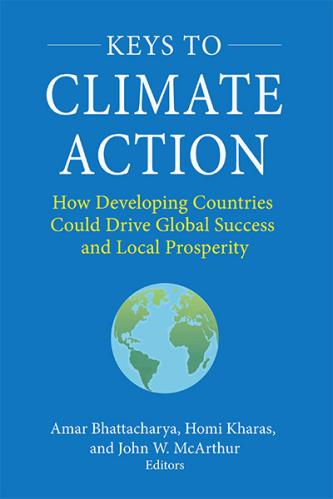In Davos, many of the assembling elites had circular economy on their mind and lips, and the program was replete with its implications. “Circular economy” is a concept described by its supporters as the biggest economic opportunity since the industrial revolution. They peg its scale at $1 trillion by 2025 and $4.5 trillion by 2030.
As both an economic means and an end, circularity is about “designing waste out of the system.” According to its proponents, by reusing resources, repurposing end-of-lifecycle items, recycling garbage, refurbishing the broken, and rewiring the torn, we can build a more sustainable world reset from the current course of depleting nature at rates unprecedented in millions of years.
It is estimated that if circularity gathers steam, global consumption of new materials could be reduced by 32 percent in 15 years and by 53 percent in 30 years. On the other hand, business as usual will see the human population increase by 20 percent by 2050 but waste expand by a far more staggering 70 percent.
A bonanza for Africa?
Considering Africa’s status as one of the most marginalized continents, circularity is expected to have massive positive impacts. Modelers relying on Cambridge University’s FRAMES tool who have undertaken deep dives into the prospects of several African countries report substantial gains should the principles of circularity take root. Below is a sample summary of circularity’s benefits to Ghana by 2030 in one such report:
All well and good, and some of the earliest examples of economic circularity target supply chains with a strong presence in Africa, such as minerals. Tons of these minerals in their refined form end up in electronic waste (e-waste). Last year, the scale of e-waste was said to dwarf the Great Wall of China.
Experts say this is tantamount to dumping $57 billion worth of precious minerals into landfills around the world. Unsurprisingly, European companies like Umicore and Ecomet (much beloved by the Vatican) are leading the charge to recover these precious substances from the waste heaps of the world.
It is to be expected that those regions that consume the most electronics and have the best technologies will be able to safely recover the most value without causing further harm to health and the environment. In low-technology contexts, such as West Africa, initiatives to manually recycle e-waste pose additional pollution and health hazards.
Furthermore, minerals usually concentrated in Africa in their raw form have the greatest commercial attraction to international recyclers. Take discarded printed circuit boards, one category of e-waste. For them, 85 percent of the value of recovery is in gold and palladium, Africa’s most prominent minerals besides petroleum. It is obvious that in a world where circularity in mineral processing is run full cycle in mineral processing, far less minerals would be required from Africa.
Poorer prospects for income-poor, resource-rich DRC
In a country like the Democratic Republic of Congo (DRC), where minerals generate 99.3 percent of exports and nearly 50 percent of government revenue, just two minerals and their derivatives, copper, and cobalt, bring in 90 percent of mineral income. DRC accounts for three-fourths of the world’s cobalt supply. These minerals are vital for the battery components of the emerging green power transition.
While many Western companies have been renewing their interest in the DRC’s riches because of the green wealth boom, others like Canada’s Electra (formerly “First Cobalt”) are choosing to recycle cobalt from discarded lithium-ion batteries as well.
It is not difficult to imagine a world where such recovery technologies mature exponentially, recovery rates soar, and source countries like DRC see their importance in the equation fall. Compounded by the intensification of an ongoing decline in demand for minerals and materials due to miniaturization of systems and components in the electronic industries.
Yet, the official development strategy of Africa’s mineral-rich countries is to add value to their resources as the primary precursor to industrialization. How would that be possible in a world where those who consumed the final forms of the most minerals in the past—the Global North—will produce the most going forward?
Not all of Africa is like the DRC
But the economic significance of minerals in Africa is exaggerated. It is also true that since Harvard’s Atlas of Economic Complexity gained popularity, most analysts have realized that traditional value addition theories based on vertical integration and so-called “beneficiation” are not how industrialization happens nowadays. Rather than foster linkages, many national value-addition strategies have deepened “enclaves”.
Industrialization today principally involves the lateral expansion of production scope as a country extends capabilities from one value chain to an adjacent one by building general innovation capacity. Hence resource-rich Western countries like Australia, Canada, and Norway still export massive amounts of raw resources even as they boost R&D spending for strategic innovation capacity.
Still, resource-based industrialization policies have been triggers and catalysts for countries in tackling barriers in the way of innovation generally. By using lessons from resource-based industrialization, both Malaysia and Chile have with varying but consistent levels of success diversified from resource-dependence.
There is thus a real risk of abrupt transitions to high-tech-enabled resource circularity denying currently resource-dependent African countries from getting onto the ladder of industrialization if their mines become stranded assets.
Traceability and repeated royalties
One solution to this dilemma of encouraging circularity without deepening poverty in the Global South is to use traceability solutions. By efficiently tracking the lifecycle of precious minerals throughout the value chain, African countries could earn “royalties” each time a quantity of minerals originating in Africa is recycled.
The idea is not outlandish. Such thinking is now respectable in the market of intangibles, through concepts like intellectual property. Furthermore, Africa is a global pioneer of traceability (this author has operated in this field for a decade and a half) and can illuminate its end of the chain.
Traceability has other benefits. If not coupled with modern traceability technologies, the growth of local recycling could create an entry point for shady, conflict, and other dodgy minerals masquerading as recovered materials. In that sense, lifecycle traceability is a fundamental requirement for effective circularity anyway.
Circular royalties and reparations earned through “track and trace” have to be re-invested through multilateral arrangements into innovative circular industries in Africa in order to build resilience. For this, African nations have to improve government accountability. Otherwise they will suffer the fate of traditional royalties that in many countries are being squandered due to poor governance.









Commentary
Will a global circular economy help or hurt Africa?
January 30, 2023